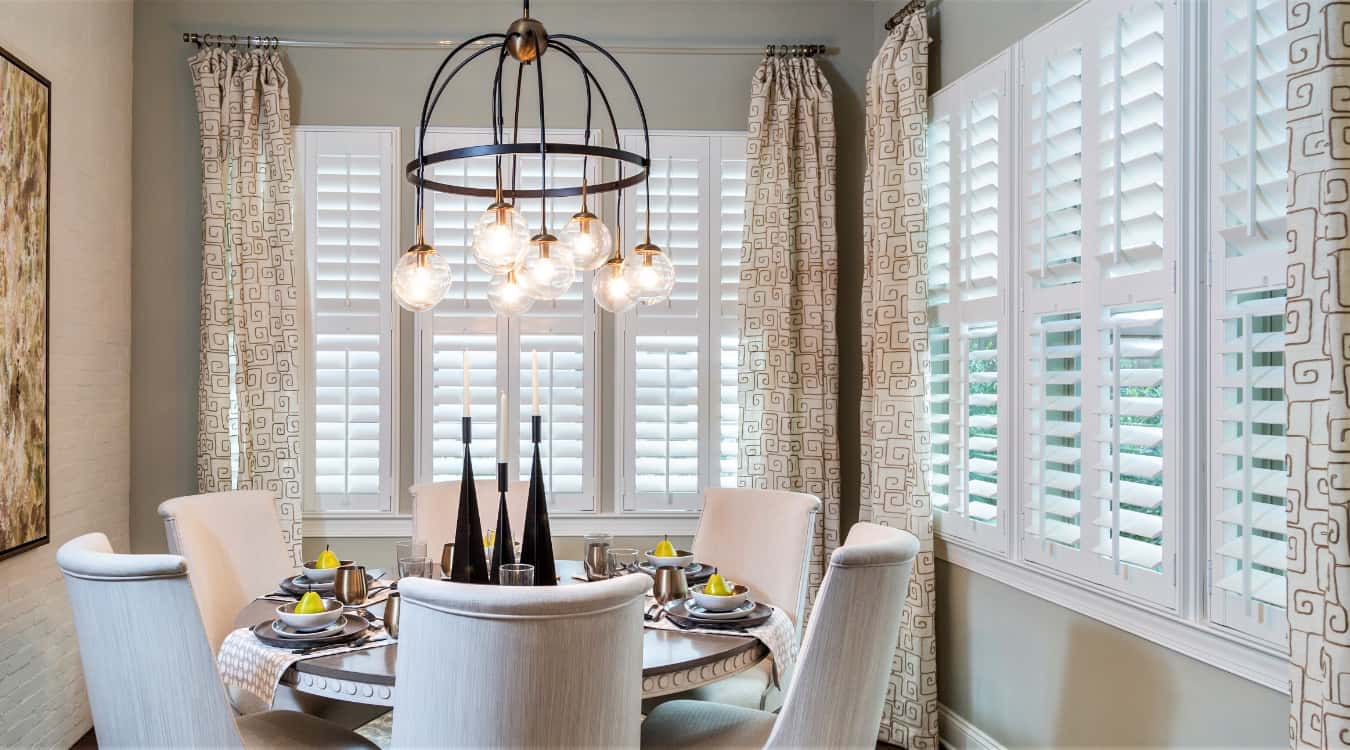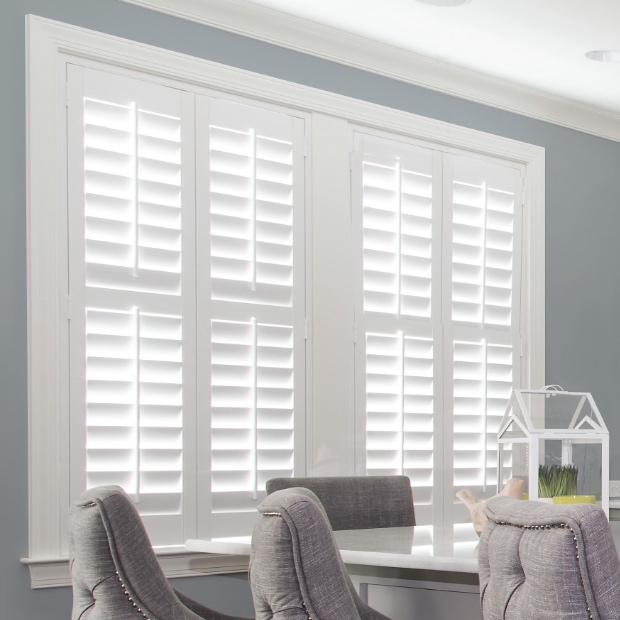What to Consider When Selecting Between Blinds and Shutters for Your Windows: An In-depth Analysis of Each Choice's Advantages
Picking the right home window treatment is a decision that goes beyond simple visual appeals; it includes performance, upkeep, and lasting financial investment. Blinds offer a cost-effective and adaptable option, while shutters provide unparalleled longevity and design. Each choice flaunts special benefits that merit careful factor to consider, especially regarding just how they line up with your home's layout and your personal preferences for privacy and light control. As we discover the vital distinctions and advantages of both choices, understanding these aspects will be vital in guiding you towards a choice that satisfies your requirements and improves your area.
Trick Distinctions In Between Blinds and Shutters
Often, home owners find themselves mulling over in between blinds and shutters when choosing window treatments. Recognizing the key differences in between these two alternatives can significantly influence their decision-making process.
Blinds are usually made from products such as timber, synthetic wood, light weight aluminum, or plastic. Blinds are often a lot more economical, appealing to budget-conscious house owners.
On the other hand, shutters are solid home window treatments that can be custom-fitted to the window structure. They are commonly created from sturdy materials like wood or composite, using a much more robust and irreversible remedy. Shutters give better insulation and can boost the overall power efficiency of a home. Additionally, they usually require even more maintenance and financial investment compared to blinds as a result of their building and construction and installment intricacy.

Benefits of Blinds
Blinds supply a useful and flexible option for house owners looking for efficient home window therapies. One of the key advantages of blinds is their flexibility to numerous designs and choices.
One more considerable benefit of blinds is their simplicity of operation. Several modern blinds come with user-friendly mechanisms, including motorized systems and cordless options, making them easily accessible for any ages. This benefit is enhanced by their ability to supply precise light control, enabling home owners to easily adjust the level of sunshine getting in a room.
Blinds also supply outstanding personal privacy choices, as they can be completely opened up, partly tilted, or completely shut, depending on the preferred level of privacy. They are usually a lot more affordable than shutters, giving an economical option without giving up design or functionality. Finally, maintenance is simple, as most blinds can be cleaned with a straightforward wipe-down, guaranteeing that they continue to be an eye-catching feature in any type of home for years ahead.
Benefits of Shutters
Shutters offer a distinctive collection of advantages that make them an enticing choice for home owners looking for trendy and durable window treatments. One of the main advantages of shutters is their remarkable toughness - shutters phoenix. Built from robust materials such as wood, vinyl, or composite, they are made to hold up against the examination of time and withstand damages from UV rays, wetness, and temperature changes

Shutters also provide enhanced privacy and light control. Home owners can quickly adjust the slats to accomplish the wanted degree of brightness while maintaining personal privacy from the exterior. Unlike blinds, which might sag or bend in time, shutters keep their shape and functionality.
Moreover, shutters can increase the worth of a residential property (blinds phoenix). Their classic aesthetic and durability attract prospective customers, making them a worthwhile financial investment. In address summary, the toughness, power performance, privacy control, and potential for boosted building worth make shutters a compelling option for window therapies
Aesthetic Factors To Consider
When choosing home window therapies, visual considerations play a vital duty in improving the overall style and ambiance of a space. Both blinds and shutters use distinctive aesthetic attributes that can complement various indoor designs, from modern to conventional.
Blinds typically supply a smooth, minimalist look, easily available in a variety of shades and products. This versatility permits home owners to collaborate blinds with existing decoration, producing a unified appearance. Their horizontal or vertical slats can add a modern side, making them suitable for city settings.
On the other hand, shutters radiate a timeless elegance that boosts rustic and conventional interiors. Their strong framework and customizable surfaces, such as wood stains or repainted alternatives, evoke a feeling of timelessness. Shutters can function as a statement piece, drawing attention to the window while providing a high end visual.
Eventually, the choice between shutters and blinds need to mirror not just personal style however likewise the wanted atmosphere of the space. By thoroughly taking into consideration exactly how each choice aligns with the overall style vision, property owners can successfully enhance their area's visual appeal, guaranteeing an unified and inviting environment.
Cost and Maintenance Elements
Price and maintenance are important aspects to take into consideration when choosing in between blinds and shutters for home window therapies. Blinds are usually more budget-friendly, with a large variety of options readily available at numerous cost points.
In comparison, shutters often tend to bring a higher first cost because of their personalized manufacturing and robust construction. This financial investment might yield lasting savings, as shutters are commonly extra sturdy and need less constant substitute. They likewise use exceptional insulation, possibly decreasing energy costs over time.
Blinds typically need regular dusting and periodic washing, while shutters can be wiped down with a wet towel for cleaning, making them easier to maintain. Ultimately, the option in between shutters and blinds should balance both initial investment and recurring maintenance requires to guarantee a satisfactory return on financial investment.
Verdict

Blinds provide a adaptable and affordable solution, while shutters supply unmatched sturdiness and style.Price and maintenance are article source important elements to take into consideration when selecting in between blinds and shutters for home window treatments. Blinds normally need regular dusting and occasional click to read washing, while shutters can be cleaned down with a damp fabric for cleaning, making them easier to keep. Inevitably, the selection between blinds and shutters ought to balance both preliminary investment and ongoing maintenance needs to guarantee a satisfactory return on financial investment.
In summary, the decision in between shutters and blinds pivots on numerous aspects, including material composition, style versatility, and cost.